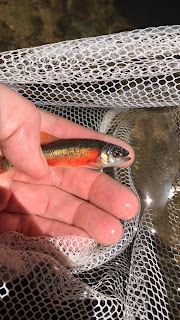To learn more, visit www.BlueRidgeSnorkelTrail.com. There is a map to find the snorkel trail locations closest to you, as well as learn about the different wildlife that are native at that particular site. Inclusion within the snorkel trail means there is parking available and that the river access is public, and restrooms and other conveniences are often available.
You don't need a whole lot of fancy equipment either. A mask, snorkel, and water shoes are the basics, and flippers, floaties or a life jacket possible extras. We've had the opportunity to use underwater viewers, and although they can get pricey, they offer an excellent alternative to a child that doesn't wear a snorkel, or a parent that wants to share the view; the two models I suggest are the Marine Sports Underwater and the Nuova Rade Aqua Scope. In the summer I often keep towels & dry clothes in the car, and the usual essentials - water, snacks, sun protection - will go a long way to keeping the crew happy.
We've visited several sites, but the two we frequent the most are the Tuckasegee and Mills River sites. If you would like to get more involved, the local conservation organizations often host river cleanups and educational programs; the websites of Conserving Carolina, mountaintrue and Mills River Partnership are a great place to start for those particular sites.
Remember:
 Never snorkel alone
Never snorkel alone Don’t move rocks around as they provide shelter to our native species
Don’t move rocks around as they provide shelter to our native species Practice LNT and help keep our banks and waters clean
Practice LNT and help keep our banks and waters clean Be aware that rocks are often slick, and know your limits regarding water depth & current
Be aware that rocks are often slick, and know your limits regarding water depth & current



No comments:
Post a Comment